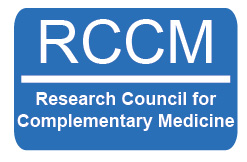Research & resources
Guide to treating vulnerable adults
Index to the Guide to treating vulnerable adults:
1. Basis of the guidelines
IFPA has adopted National Health Service (NHS) protocols regarding Consent to Treatment in developing guidelines for members. The definition of a “Vulnerable Adult” is a person who is or may be for any reason unable to take care of him or herself, or unable to protect him or herself against significant harm or exploitation. https://www.uhs.nhs.uk/HealthProfessionals/Clinical-lawupdates/Whatismeantbyavulnerableadult.aspx
2. IFPA guidelines for vulnerable adults
Treatments must be delivered within relevant legal context
- Signed informed consent and agreement from the parent or guardian is required. If the informed consent is questionable it is reasonable to contact the parent or guardian to check.
- Insurance must be in place to cover the treatment.
- If, in the course of treatment, the practitioner has any concerns regarding the person’s safety, welfare or well-being the practitioner must report their concerns to their local authority’s Adult Safeguarding Board. Members can find contact details of their local safeguarding board from their local council. If the practitioner has concerns about a vulnerable adult whilst working for another organisation, they must report their concerns to the designated Safeguarding Officer or senior manager at that organisation.
- Under no circumstances is it appropriate for the therapist to question the client/subject regarding abuse – it must be referred on.
- Records must be kept securely for 7 years.
- In NHS settings, other public body and voluntary sector/charity settings, a Disclosure and Barring Service (DBS) check will be required if working with children or vulnerable adults. Currently, individual members can apply for the basic check. Organisations typically require enhanced level checks for anyone working with children. This can only be applied for via organisations and accredited agents. More information is available at www.dbscheckonline.org.uk
3. Treatments must be modified by the practitioner based on the profile of the client. Detailed treatment records must be kept
The client profile is determined by:
- Age.
- Medical history.
- Required outcome from the treatment.
- Cognitive function/understanding and context e.g. Is this a 17-year-old referring themselves for exam stress or disabled child.
- Parental/guardian views/input.
- Any other relevant factors.
4. Some adaptations that may be applied
- Minimum levels of essential oils on the skin should be diluted in carrier oil (peanut oil should never be used as a carrier).
- Up to a maximum of 1% depending on age (Note that for babies under 3 months IFPA recommends not to use essential oils on the skin and to choose alternative options). However, this is advice not a directive as parental/guardian views and the opinion of the professional qualified Aromatherapist are relevant in the context of the list above and other relevant factors.
- Where appropriate (especially for infants), consider indirect options for application of essential oil e.g. diffusion (not naked flame), drops on pillow, dispersed then added to bath water.
- When massaging, avoid any areas that might be considered invasive e.g. chest, buttocks and inner thighs. For example, a female gymnast who might need treatment for strain to the pectoral muscles should be referred on to a physiotherapist or sports massage therapist but potentially could be treated with anti-inflammatory or pain relieving essential oils by the Aromatherapist to inhale or a body oil to self-apply at home.
- Simple blends of no more than three oils avoiding oils with higher risk of sensitisation (records kept).
- Patch test first where appropriate.
- Children would normally be chaperoned but with vulnerable adults there is flexibility and the therapist can make a judgment based on profile and context. Members must record identity of the chaperone and justify any decision not to use a chaperone considering clients wishes, their profile and other relevant factors.




